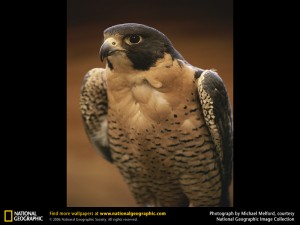
It’s so wonderful that falcons and hawks have made a come back in big cities. We’ve had red tailed hawks in our yard drooling over our chickens. I know they are in the area to munch on the rodents that live near all our restaurants, and I say “welcome hawks! Munch away!”
Well Atlanta has set up a webcam to spy on a pair of nesting falcons. Read the press release below to learn more about this pair.
Atlanta’s most prominent falcons couple is back in the public eye.
A Web camera at www.georgiawildlife.com is again providing frequent updates on two adult peregrine falcons and their nest outside the 51st-floor offices of the McKenna, Long & Aldridge law firm in downtown Atlanta.
The protected raptors, which typically mate for life, began laying eggs February 27. They have four now. The nestlings are expected in early April. The young will leave the nest at about 5 weeks old.
Clay C. Long, founding partner and a former chairman of the law firm, said the peregrines offer an annual treat, watching the young “from birth through the transition from down to feathers, then learning to fly and to hunt, and finally ending with our couple sending their young off in the world to find their own cliffs on which to dwell.”
Peregrines were removed from the federal list of threatened and endangered species because of a successful population recovery effort, but Georgia still lists the birds as rare. There are only two known peregrine pairs nesting in Georgia, both in Atlanta, said Jim Ozier, a Nongame Conservation Section program manager with the state Wildlife Resources Division.
Peregrines are possibly the fastest animal in the world. Their dives, used to catch birds in flight, have been clocked at more than 200 mph.
The Wildlife Resources Division and the world have watched falcons nest at McKenna, Long & Aldridge for five years, thanks to the law firm and a grant from The Garden Club of Georgia. One of the first peregrines nesting there was released in Atlanta by the state, in a partnership with Georgia Power and Zoo Atlanta, Ozier said.
The new falcons will face an urban environment plump with pigeons and other prey on the wing but also packed with potential hazards such as windows and traffic. Two of the three peregrines that hatched on the high-rise balcony last year were later treated for injuries.
“The young have to learn how to survive in the city,” Ozier said.
To see this year’s nest, go to www.georgiawildlife.com and click “Conservation,” then “Species of Concern” and the peregrine falcon Web cam link under “Bird Conservation” label. The view shows the planter in which the birds nest. Frequently hit your computer’s refresh, or reload page, button: The images are updated every 30 seconds.
